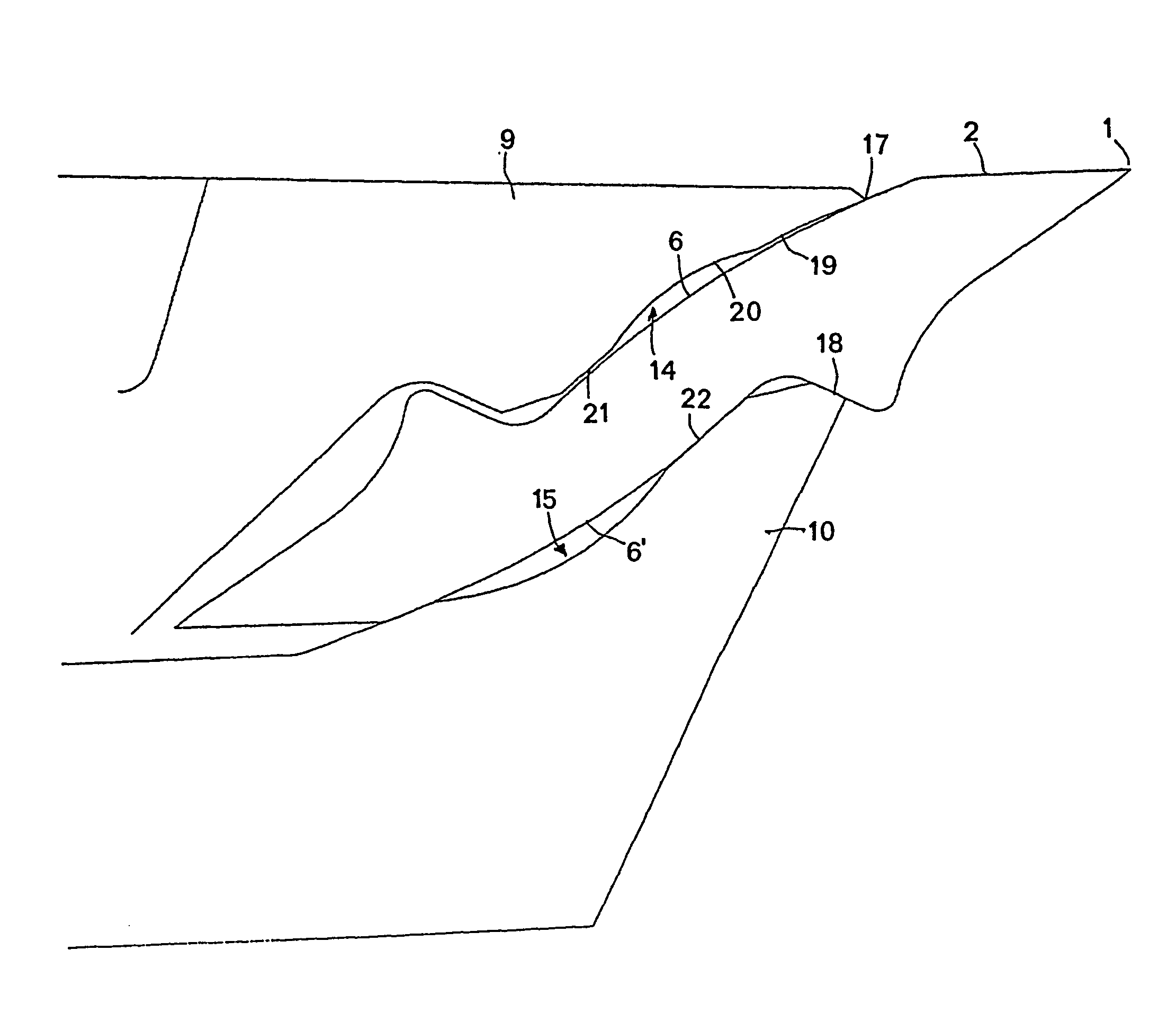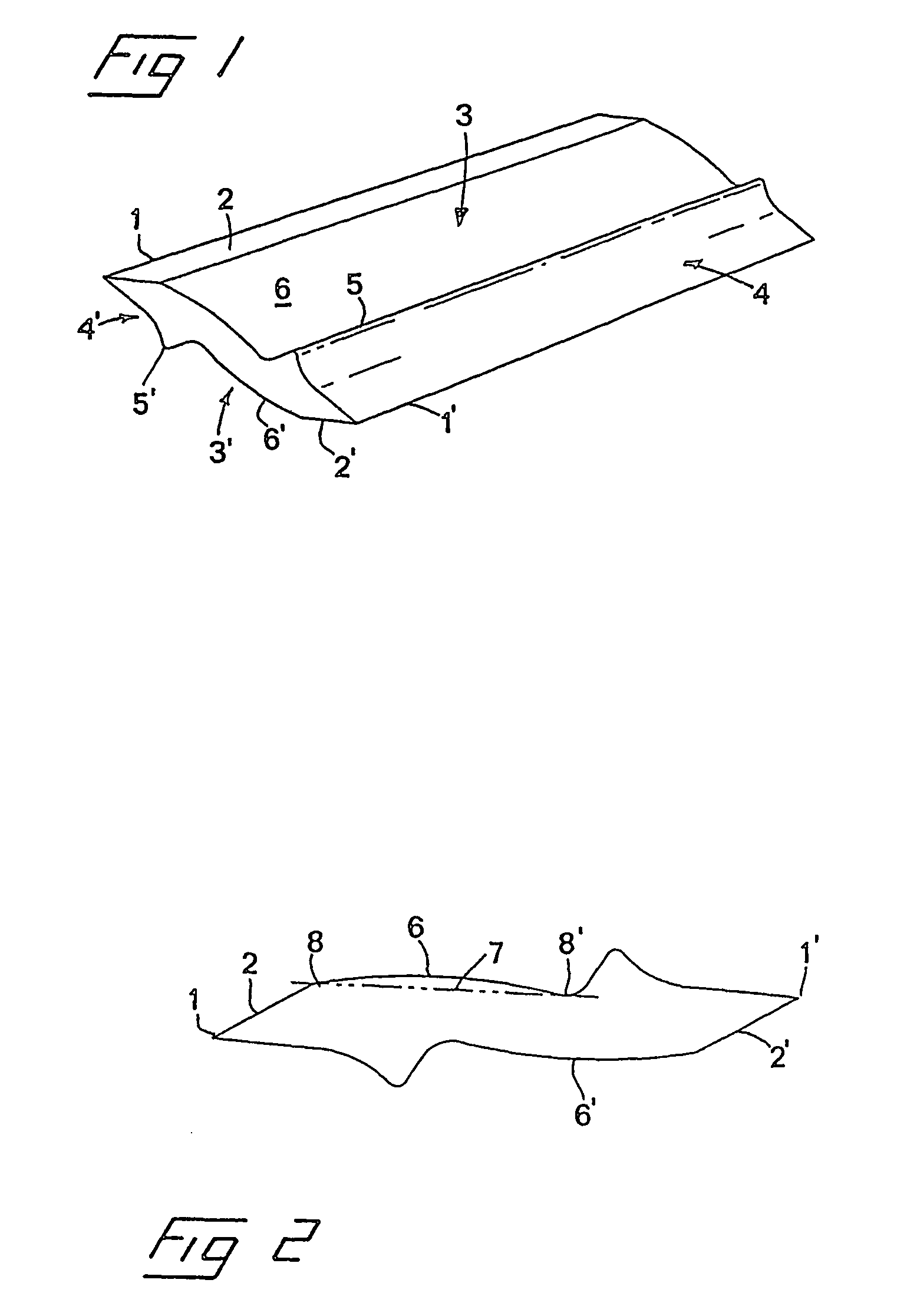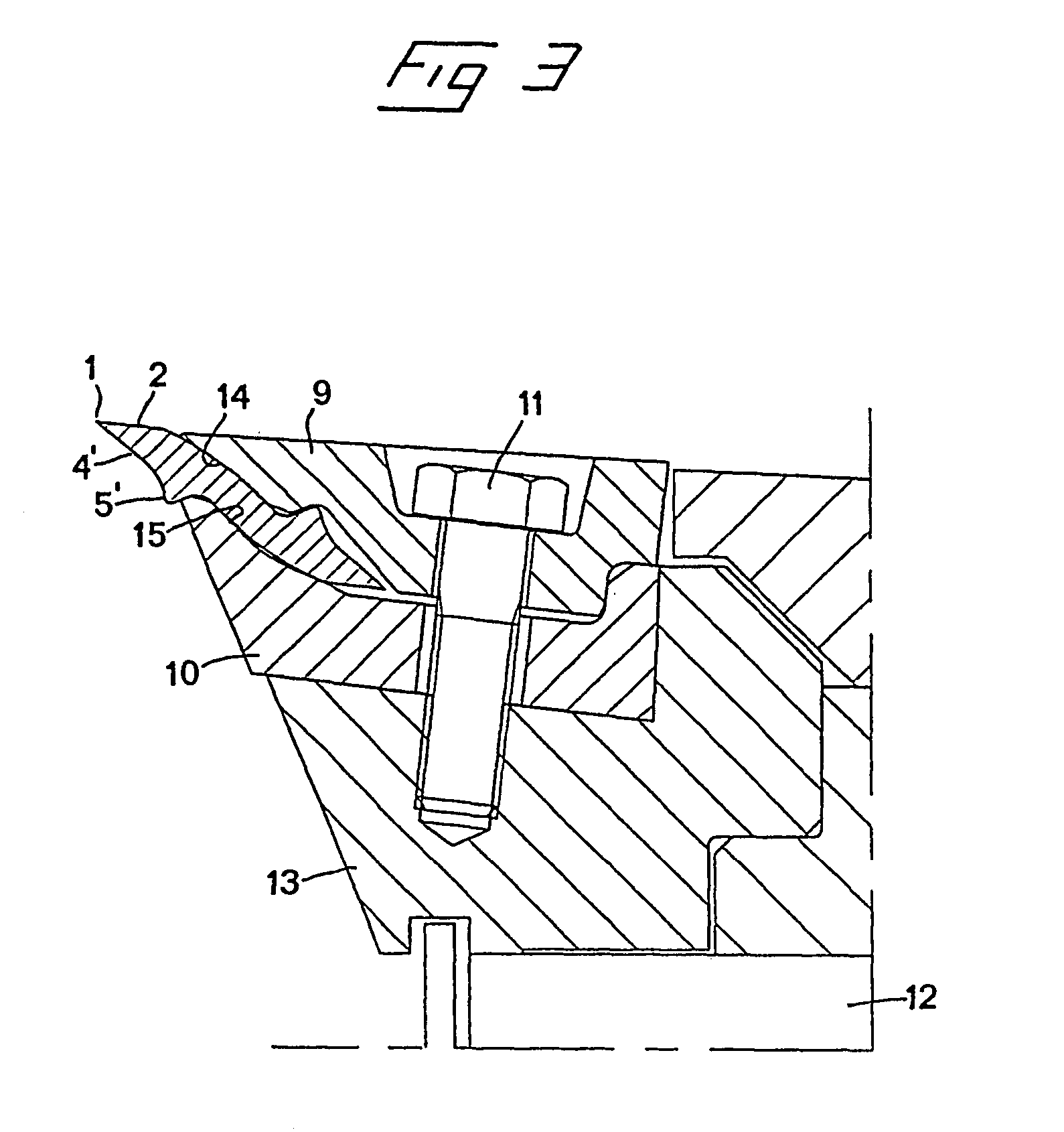Chipper knife and holder therefor
a chipper knife and holder technology, applied in the field of chipper knives, can solve the problems of inability to regrind worn chipper knives without time-consuming handling, often becomes too expensive, and the physical properties of chipper knives often set lower limits as regards the size of the flank, so as to reduce operative expenses, improve chip quality, and increase the yield of timber
- Summary
- Abstract
- Description
- Claims
- Application Information
AI Technical Summary
Benefits of technology
Problems solved by technology
Method used
Image
Examples
Embodiment Construction
[0032]FIGS. 1 and 2 show a first preferred embodiment of a chipper knife according to the present invention, on the one hand in a perspective view and, on the other, in cross-section. The chipper knife is of an indexable insert type having two cutting edges 1, 1′ and having cross-sectional point symmetry about a central point. On each side of a straight line between the cutting edges, the chipper knife has a flank 2, 2′, a main surface 3, 3′ and a chip guiding surface 4, 4′. Between the respective main surfaces 3, 3′ and the corresponding chip guiding surface, the chipper knife is formed with a chip guiding bead 5, 5′.
[0033]Each main surface 3, 3′ comprises a cross-sectionally convexly bent surface portion 6, 6′. In the preferred embodiment, the bent surface portions have a part-circular shape in cross-section, and in FIG. 2 a straight line 7 is drawn forming a chord which connects the outer edges or ends 8, 8′ of the part-circularly bent surface portion.
[0034]As is evident from the...
PUM
| Property | Measurement | Unit |
|---|---|---|
| lengths | aaaaa | aaaaa |
| cross-sectional length | aaaaa | aaaaa |
| symmetry | aaaaa | aaaaa |
Abstract
Description
Claims
Application Information
 Login to View More
Login to View More - R&D
- Intellectual Property
- Life Sciences
- Materials
- Tech Scout
- Unparalleled Data Quality
- Higher Quality Content
- 60% Fewer Hallucinations
Browse by: Latest US Patents, China's latest patents, Technical Efficacy Thesaurus, Application Domain, Technology Topic, Popular Technical Reports.
© 2025 PatSnap. All rights reserved.Legal|Privacy policy|Modern Slavery Act Transparency Statement|Sitemap|About US| Contact US: help@patsnap.com



